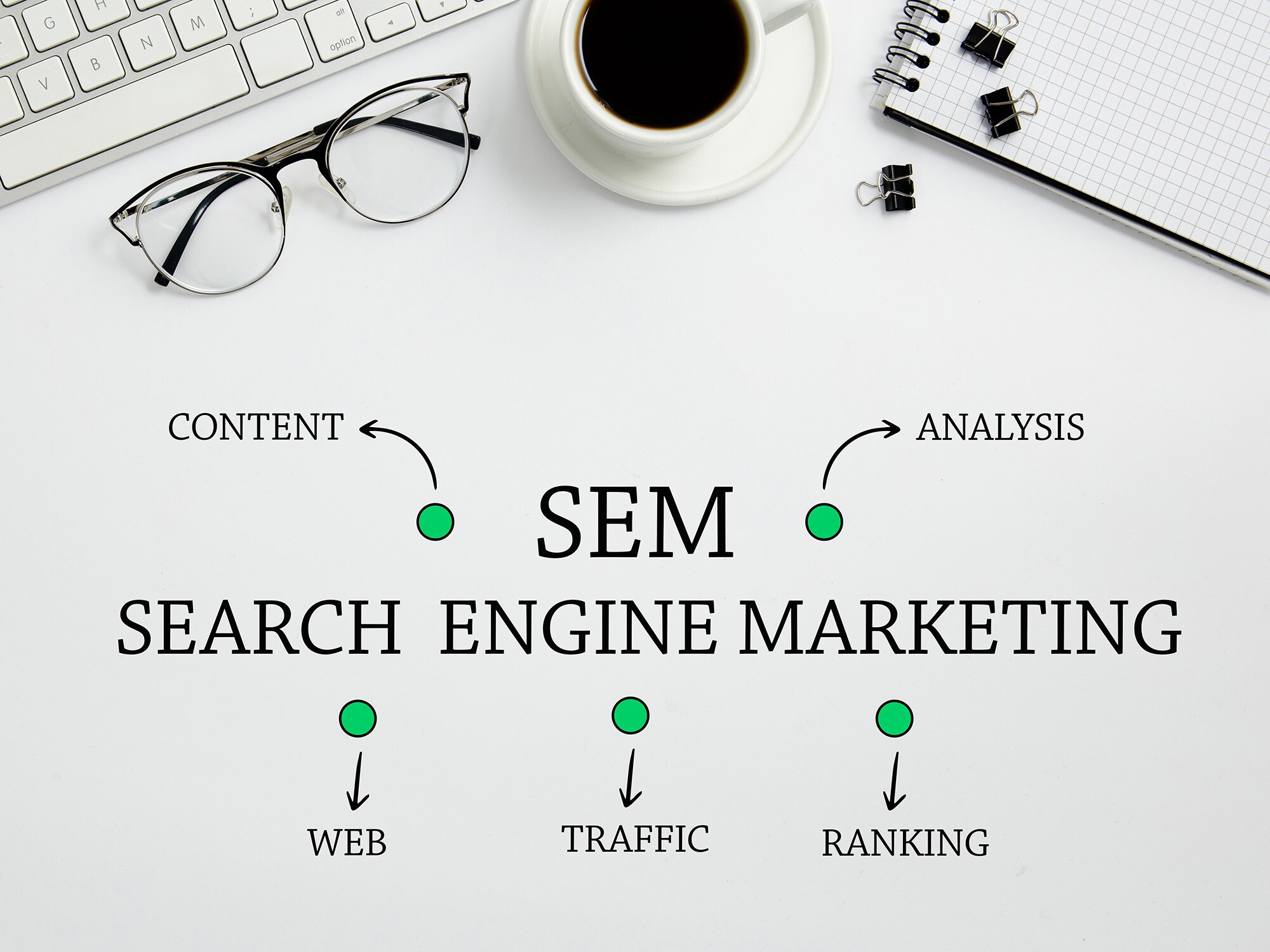Creating an SEM Strategy. Search Engine Marketing (SEM) is the process of using paid ads to attract target users by having these ads appear at the top positions of Google’s search results. Google’s advertising system was launched in 2000 with over 300 customers. So it’s safe to say SEM has been around for quite a long time, and the fact that it’s still used today speaks to the fact that this marketing strategy is highly effective.
Creating a successful SEM strategy requires understanding the basics of SEM trends and knowing how to apply them correctly. The most well-thought-out plan can fail if you don’t execute it right.
So, keep reading to find out how to create an SEM strategy for your company.
Define Your Goals
Before planning a proper marketing campaign, you need to define your goals. What do you want to happen once they click on your PPC ad? Then, before you start spending money, you need to hammer out these technicalities.
Defining your goals will help you plan the entire campaign. Please ensure everyone involved in the campaign also understands the goal so they can keep it in mind as they plan. This way, you ensure everyone’s strategy aligns.
Look at Your Competition
Now that you’ve defined your goal, it’s a good idea to see what your competition is up to. First, look at all your competitors’ current paid ads for your company’s niche. Are your competitors even using PPC campaigns?
This will give you a good idea of what your competitors are doing. From there, you need to find a way to make your ads stand out to meet your goals. Of course, you don’t want to copy your competition, so thoroughly catalog what they’re doing.
Pick a PPC Platform
In the same way that there are various social media platforms you can use for social media marketing, there are different PPC platforms. Each platform has its pros and cons, so it’s vital that you thoroughly look into them.
Google is a good option as it has a high search volume, but the downside is that there’s a lot of competition. Conversely, Bing is less expensive than Google but has less search volume.
Your needs will dictate which platform you pick. There isn’t a wrong or right answer, so you must consider what you and your audience need.
Your decision also doesn’t need to be permanent! You can test out a few platforms to see what works best for you and what gives you the best results.
Keywords Matter in an SEM Strategy
There’s a debate regarding SEO vs. SEM, but keywords are something they both have in common. The keyword section is a crucial aspect of your campaign, as it can make or break it. Doing keyword research is a skill, so take your time researching your keywords, or consider outsourcing this section thoroughly.
Your goals will once again dictate what keywords you need to use.
Like everything else in marketing, various keywords have pros and cons. For example, high-volume keywords will give you greater coverage but increase the competition. In contrast, low-volume keywords are less competitive but won’t cover as much ground.
Each type of keyword has its place in digital marketing; you need to decide what you want. Casting a wider net with high-volume keywords can give you great results, but so can a low-volume keyword that targets a niche audience.
This is where testing is essential. See how the different types of keywords work and which brings you closer to meeting your goal. The beauty of working online is you can easily switch things up if you see they aren’t working as expected.
Set a Budget
This will be one of the most challenging steps in this process. Where SEO is generally free and works to build organic traffic, SEM often has a learning period where you can spend a lot of money before you find the perfect starting budget.
While you need to spend money to earn money, if your campaign isn’t successful, you can potentially end up wasting all that money. Therefore, many companies prefer to consult PPC specialists before setting a budget.
Create the Ads
Once you’ve done all the planning, it’s time to create the ads you’ll promote. But, again, the content is just important, if not more so, than the preparations. Just because your ad gets featured doesn’t mean anyone will click on it.
This is where compelling copywriting comes into play. But first, you need to convince people that your ad can answer their questions.
This section is what you’ll be revising the most. As your ads go live, you can see how people react to them and then make changes to try and increase your click rates. Your specific audience will determine the type of copy you need to entice readers.
Easily Create an SEM Strategy
When creating an SEM strategy, you have to do your research. Creating a plan and an effective strategy are two completely separate things, so if you want to succeed, you must put in the time and effort. So start researching SEM trends that you can use in your campaign.
Ready to make your mark in digital marketing? Contact us now and gain visibility among local customers actively searching for your services. Let us help you leave a lasting impression in the world of online advertising.







